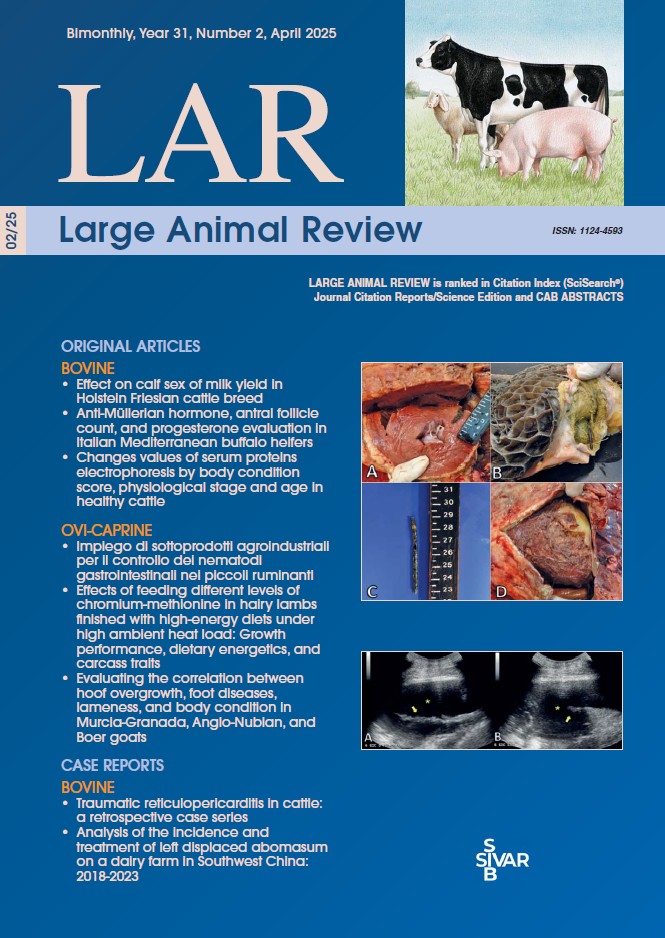Anti-Müllerian hormone, antral follicle count, and progesterone evaluation in Italian Mediterranean buffalo heifers
Abstract
Anti-Müllerian hormone (AMH) has been used as a molecular marker of the ovarian follicular pool and follicular responsiveness to superovulation treatments in cattle and other species. Early studies in buffalo cows indicated that circulating AMH levels were relatively low, which appeared to be correlated with ovarian follicular reserve. This study aimed to evaluate AMH in buffalo heifers to investigate its potential correlation with the phase of the oestrous cycle and follicle count (FC). For this study, forty-two cycling Mediterranean buffalo (Bubalus bubalis) heifers, aged 18-20 months, were selected in a Sicilian farm. Using rectal palpation and ultrasound exam of the genital tract, recording uterine tone and ovarian findings (follicles and corpus luteum), the heifers were divided into two main groups: those in the luteal phase (n = 32) and those in the follicular phase (n = 10). Each ovary was carefully examined and the total number of follicles ≥ 3 mm in diameter was duly recorded for each animal. Blood samples were taken from the caudal vein for progesterone and AMH assay. The unpaired Wilcoxon signed-rank test was used to evaluate longitudinal changes in hormone levels from the follicular to the luteal phase. The Pearson correlation coefficient assessed the possible correlation between AMH and progesterone and between AMH and FC. The results indicated no significant difference in AMH levels between the follicular and luteal phases, and no correlation between AMH and P4. However, a significant correlation was observed between FC and AMH. AMH in buffalo heifers was not found to be correlated with the phase of the oestrous cycle, but rather with FC. The parallelism with bovine species suggests that AMH may be a useful indicator for selecting buffalo heifers with good fertility and long productive life, which could potentially serve as candidates for reproductive biotechnology.


